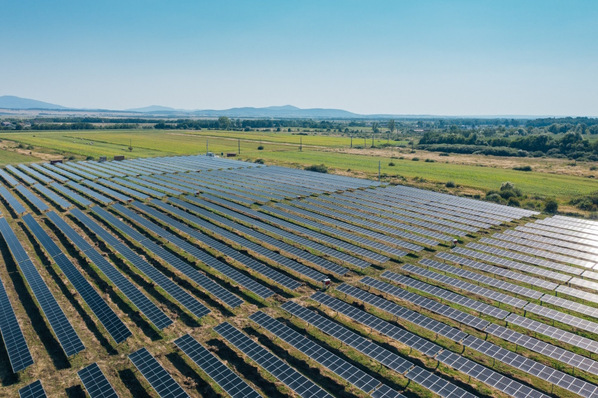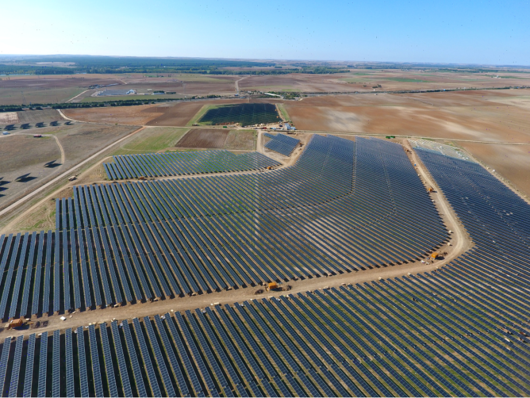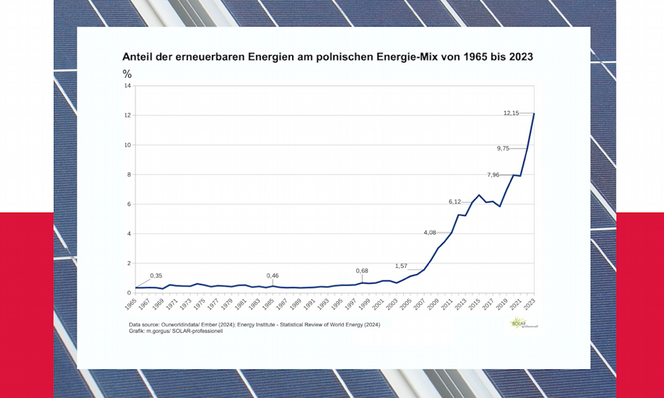Energaia, one of the largest solar and renewable energy trade shows in France, has this year returned after its Covid-enforced hiatus in 2020, with Q Cells welcoming crowds eager to get back down to business in Montpellier this December 8 & 9.
The Q Cells booth featured the company’s newest, smartest storage device, the Q.Home Core, which has been designed to specifically meet the storage needs of homeowners, as well as its latest next-generation Q.Tron solar module, which uses n-type Q.antum Neo technology to drive solar module efficiencies to fresh new heights.
A further highlight of the Q Cells booth this year were the new Q.Peak Duo M-G11 module, of which 108 cells version has 400-410 W, which is the Company’s latest low-carbon footprint (CFP) module manufactured using low-carbon materials specifically for the French market, in order to meet expected high demand in the new 100-500 kWp segment.
Q Cells’ module offering at the show was completed by the Q-Peak Dou ML-G9+/AC module, which features embedded Enphase’s microinverter to deliver outstanding yields for the customer and to enable easy and fast installation for installer.
A cleaner pathway for France’s renewables journey
The introduction by the French Energy Regulatory Commission (CRE) to set a mandatory low-carbon footprint (CFP) certification for utility-scale PV tenders was welcomed by Q Cells, and the company has consistently met CRE’s requirements on this front. Indeed, Q Cells was the first Korean company to secure CFP certification in France in 2014, and continues to drive standards in clean manufacturing in Korea and globally, becoming a founding member of the Ultra Low-Carbon Solar Alliance (ULCSA) in the US and the first renewable energy company to declare its participation in Korean RE100. Recently, Q Cells’ mother company Hanwha Solutions invested in REC Silicon in the US to further secure a stable supply of polysilicon produced using clean hydropower – a testament to the company’s commitment to lowering the carbon footprint of its solar supply chain.
An new chapter in storage for Q Cells
Q Cells also unveiled its new Q.Home Core energy storage solution at Energaia. The system is available in two versions; hybrid and AC-coupled. The Q.Home Core H4 consists of hybrid inverter of 4.6 kW and a battery pack of 6.86 kWh, while the Q.Home Core A4 is comprised of an AC-coupled inverter of 4.6 kW and a battery pack of 6.86 kWh.
The Q.Save, which is the battery pack of the Q.Home Core, is scalable with the option to increase the storage capacity by 6.86 kWh increments, up to 20.5 kWh – which is enough to easily cover the needs of most households. Using Samsung SDI battery modules for excellent system reliability and safety, Q Cells offers a fully-wrapped 15-year warranty. With embedded ATS (Automatic Transfer Switch) that transfers power supply from grid to storage in case of blackout, the Q.Home Core provides seamless operation mode conversion for stable backup and continuous power consumption.
See also: A new roof-parallel mounting system for flat roofs
The Q.ommand Home, a mobile app for the homeowner, features a dynamic optimiser function that uses an AI algorithm to monitor real-time weather information in order to fully maximise energy yield. Q Cells also provides mobile apps for installers, Q.ommand Go and Pro, for their easy commissioning and O&M service. With a simple, elegant design that is easy to install and use, the Q.Home Core provides peace of mind to homeowners keen on taking a firmer control on their clean energy management and usage.
Next-gen cell technology lands in Montpellier
The Q.Home Core was not the only new product set for a European debut at Energaia. Also being showcased at the exhibition was Q Cells’ new solar module, the Q.Tron.
Q.Tron is made using Q Cells’ new innovative Q.antum Neo technology, which is based on a Neo Power Transmitter to combine the passivation layer and electrical interconnection functionality. Using n-type solar cells, this new layout allows for full passivation and contact at the same time, thereby overcoming some of the previous efficiency limitations inherent in PERC technology, and driving maximum module efficiency up to 22.9%. The 120 cells version of Q.Tron will provide power output of up to 405 Wp, as well as an inclusive 25-year product and performance warranty.
The current dominance of PERC-based technology in the solar market is not going to subside any time soon, however, and Q Cells also showcased its latest PERC modules at Energaia, including the new Q.Peak Duo-G10 and G11 models.
Also interesting: Q-Cells and Tesvolt cooperate on contracting and system leasing
The Q.Peak Duo-G10 solar module builds upon the technological prowess of its predecessor – the Q.Peak Duo-G9 – and packs in more power thanks to the larger M6 (166mm) wafers. For customers’ intent on pursuing an even higher power class, Q Cells has developed the Q.Peak Duo XL-G11 solar module, which uses M10 wafers measuring 182mm to reach a power output of up to 590 Wp.
First Q Cells module to surpass 500 watt mark
This makes the Q.Peak Duo XL-G11 the first Q Cells module to surpass the 500 Wp mark, doing so with an efficiency of 21.7% using Zero-gap technology. This is also Q Cells’ largest solar module to date; one that delivers extremely high yield per surface area thanks to the high-performance metrics of the company’s renowned, patent-protected Q.antum technology. Visitors to the Q Cells booth were also able to check out the new Q.Peak Duo ML-G9+/AC module, fitted with an Enphase Energy IQ 7+ microinverter that converts direct current (DC) solar electricity at the module level to reach module efficiencies of up to 21.5%, and help bring an overall lower Levelised Cost of Electricity (LCOE) for the customer. (mfo)







